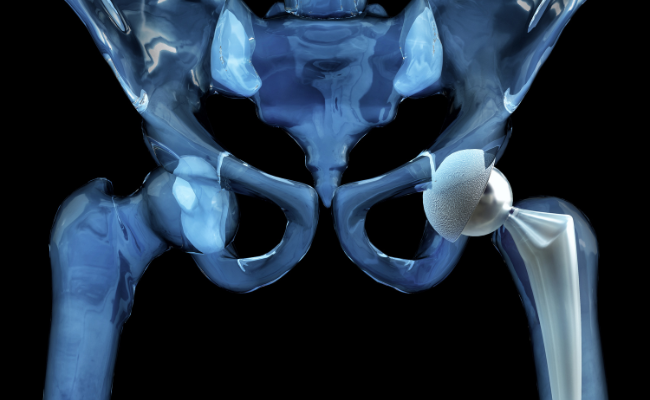Know about Hip Replacement
- January 23, 2024
- No Comments

What is Hip Replacement?
Hip replacement, or hip arthroplasty, is a surgical procedure involving the replacement of a damaged or diseased hip joint with an artificial implant, known as a prosthesis. Primarily recommended for individuals experiencing severe hip pain and reduced mobility due to conditions like osteoarthritis or rheumatoid arthritis, the surgery aims to restore functionality and alleviate discomfort. Surgeons typically perform this procedure on adults aged 50 and older when conservative treatments prove ineffective in addressing the debilitating symptoms affecting daily activities.
Why is Hip Replacement Necessary?
The hip joint is a crucial pivot point in the body's skeletal system, facilitating various movements essential for daily activities such as walking, sitting, and standing. However, factors such as age, injury, or underlying joint diseases can contribute to the breakdown of the hip joint, leading to pain and functional impairment.
Osteoarthritis, the most common reason for hip replacement, occurs when the protective cartilage that cushions the ends of bones in the joint deteriorates over time. This results in bones rubbing against each other, causing pain, stiffness, and reduced mobility. Rheumatoid arthritis, an autoimmune disorder, can also affect the hip joint, leading to inflammation, pain, and joint deformity.
When conservative treatments like medications, physical therapy, and lifestyle modifications fail to provide adequate relief, hip replacement emerges as a viable option to restore mobility and alleviate debilitating pain.
How is Hip Replacement Performed?
Hip replacement surgery involves a series of carefully orchestrated steps to ensure optimal outcomes for the patient.
- Preparation: Prior to the surgery, the patient undergoes a comprehensive assessment, including a review of medical history, imaging tests, and blood work. This initial evaluation helps the surgical team tailor the procedure to the individual's specific needs and circumstances.
- Anesthesia: Depending on the patient's health and the surgeon's preference, either general anesthesia or regional anesthesia (epidural or spinal) is administered. This ensures that the patient is comfortable and pain-free during the surgery.
- Incision: The surgeon then makes an incision to access the hip joint. The choice of incision may vary based on the surgeon's expertise and the patient's unique anatomy. Common approaches include the posterior, anterior, or lateral approaches.
- Removal of Damaged Tissues: Once access is gained, the damaged cartilage and bone within the hip joint are carefully removed. This step creates the necessary space for the placement of the artificial implant.
- Implant Placement: The artificial hip joint components, typically made of materials such as metal, plastic, or ceramic, are then securely implanted. These components may include a metal socket for the pelvis, a metal or ceramic ball replacing the femoral head, and a metal stem connecting the ball to the femur.
- Closure: After the implant is secured, the incision is closed with sutures or staples, and a sterile dressing is applied to the surgical site.
- Recovery: Post-surgery, the patient is closely monitored in the recovery room before being transferred to a regular hospital room. Physical therapy and rehabilitation play a crucial role in the recovery process, aiding the patient in regaining strength, flexibility, and mobility.
Treatment Solutions for Hip Replacement:
- Minimally Invasive Techniques: Some surgeons opt for minimally invasive approaches, characterized by smaller incisions and reduced muscle disruption. This approach is associated with quicker recovery times and less postoperative pain compared to traditional techniques.
- Robotic-Assisted Surgery: Technological advancements have introduced robotic-assisted surgery for hip replacement. Surgeons use robotic systems to enhance precision during the procedure, potentially leading to better implant alignment and overall improved outcomes.
- Customized Implants: In certain cases, surgeons may choose to use customized implants based on the patient's unique anatomy. This personalized approach aims to improve the fit and longevity of the artificial joint.
- Dual Mobility Implants: These implants have an additional bearing surface, reducing the risk of dislocation—a common complication after hip replacement surgery. This innovation contributes to the overall stability of the artificial joint.
Benefits of Hip Replacement:
- Pain Relief: One of the foremost benefits of hip replacement is the significant relief from chronic hip pain. Patients often experience a marked reduction in pain levels, enabling them to engage in daily activities without the burden of constant discomfort.
- Improved Mobility: The restoration of joint function through hip replacement surgery leads to enhanced overall mobility. Patients regain the ability to walk, climb stairs, and participate in various physical activities that were previously hindered by hip pain and stiffness.
- Enhanced Quality of Life: Hip replacement has a transformative impact on the quality of life for individuals suffering from debilitating hip joint conditions. The relief from pain and restoration of mobility allows them to lead more active and fulfilling lives.
- Long-Term Durability: Advances in implant materials and surgical techniques contribute to the long-term durability of hip replacements. Many patients enjoy decades of improved joint function without the need for further surgical intervention.
- Reduced Disability: By addressing the underlying issues affecting the hip joint, hip replacement can prevent or reduce disability associated with hip disorders. This is particularly significant for older adults looking to maintain independence and functionality in their daily lives.
Comments (0)